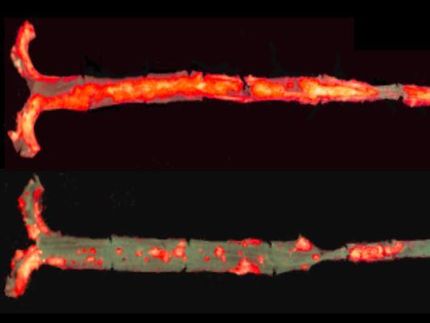Biochemical mechanism behind a rare, painful genetic disease identified
Study might open door to first effective treatment for ACDC disease
Advertisement
A team of researchers at the National Institutes of Health has uncovered a possible biochemical mechanism behind a rare, painful genetic disorder called ACDC disease, which causes calcium buildup in the arteries. The finding could lead to the first effective treatment for the potentially debilitating condition and might provide insight into other vascular diseases, including atherosclerosis, the researchers say. ACDC is short for arterial calcification due to deficiency of CD73. (CD73 is an enzyme that reduces calcium buildup in the arteries). The disease targets the hands and feet and can limit a person's ability to walk and exercise.
In the current study, researchers discovered how a deficiency of CD73 triggers a cascade of adverse biochemical events that leads to increased calcium buildup. That discovery quickly fueled progress on a possible treatment. Scientists generated stem cells from the skin of patients with ACDC disease and injected them into mouse models. They found that tissue formed in the mice by the patient-derived cells calcified over time. The researchers showed that treating these mice with several drugs including etidronate, which is used to strengthen bone in certain diseases involving bone loss, helped reduce calcification of the human tissue. The findings suggest that a similar strategy might help treat people with ACDC disease.
Original publication
Other news from the department science

Get the life science industry in your inbox
By submitting this form you agree that LUMITOS AG will send you the newsletter(s) selected above by email. Your data will not be passed on to third parties. Your data will be stored and processed in accordance with our data protection regulations. LUMITOS may contact you by email for the purpose of advertising or market and opinion surveys. You can revoke your consent at any time without giving reasons to LUMITOS AG, Ernst-Augustin-Str. 2, 12489 Berlin, Germany or by e-mail at revoke@lumitos.com with effect for the future. In addition, each email contains a link to unsubscribe from the corresponding newsletter.

























































